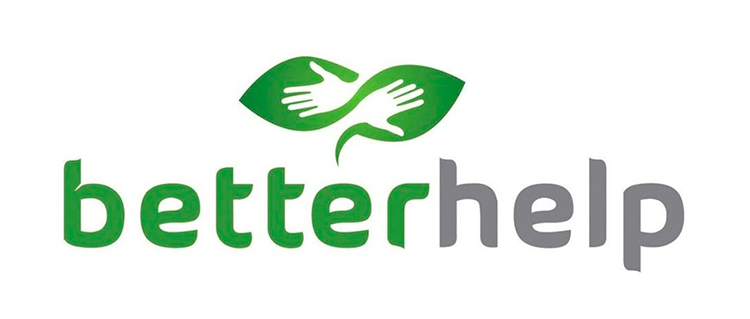This article is sponsored by BetterHelp, the world’s largest professional therapy platform, done online.
Recently, the word “trauma” has made its way into mainstream conversations and online discourse in a whole new way. We’re finally talking about the real, lasting effects tough experiences have on humans. And as a result, many of us are finally getting introspective about the things that have affected us throughout our lives.
This is important — but it may also raise questions or uncertainties about how best to heal those traumas. Actually doing the work of trauma healing is hard, but sometimes the toughest step can be the first step. For some, that’s identifying the most effective avenues for trauma healing. For others, it’s identifying the traumas themselves.
But tough as it may be, there are ways to begin that healing journey. In partnership with BetterHelp, we’ve enlisted Sarah Close, LPC and Clinical Operations Manager at BetterHelp, who offers mental health care with a trauma-informed approach, to help us make sense of what trauma healing really is, what people can expect when they begin this process, and why it feels so incredibly hard.
First of all, what is trauma healing?
“Trauma healing is the process of tending to psychological and emotional wounds we’re carrying with us from traumatic experiences in our lives,” says Close. “This process can look different for different people, but tends to aim toward similar goals: Recover from these experiences, regain safety and agency, and restore overall wellbeing.”
Trauma healing won’t look the same from one person to another.
“Despite our attempts to understand trauma in a universal way, it is essential to hold space for the complexity of the human experience, and to be open to the individual journey that trauma healing can take for everyone,” says Close. “There are many different approaches to trauma healing to explore.”
Therapy can help you identify sources of trauma
Some of us may be working through traumas we haven’t even identified fully, which is why exploring our lived experiences with a licensed therapist can be so powerful.
“Working with a trained mental health professional can be a great way to support identification and awareness of trauma,” says Close. “Through guided and informed conversations with a therapist, people can explore their experiences and gain insights into how trauma may be impacting their lives. Whether through individual therapy, group therapy, or specialized trauma-focused approaches, therapy can be a valuable tool for individuals on their journey towards trauma healing and recovery.”
“Working with a trained, trauma-informed clinician to gently explore and understand our story [is one way to approach trauma healing],” she adds. “There are specific trauma training certifications that have been effective in the treatment of trauma to consider, such as Trauma-Focused Cognitive Behavioral Therapy (TF-CBT), Eye Movement Desensitization and Reprocessing (EMDR), Somatic Experiencing (SE), Internal Family Systems (IFS), and NeuroAffective Relational Model (NARM).”
Therapy isn’t the only way to begin healing trauma
Trauma healing can also happen in support groups, as community and validation can help people heal, or self-regulation activities, which can look different from person to person (but may include things like physical activity, journaling, or spending time in nature).
Body-based therapies can also be effective. “Trauma often does not make logical sense, and so the brain can come up with many strategies to cope with the confusion these experiences produce. A common brain-strategy is to dissociate, or ‘go out of body,’ to be away from the pain,” says Close.
To counteract this body-based activities, such as yoga, Tai Chi, massage therapy, progressive muscle relaxation, Somatic Experiencing (SE), dance/movement therapy, and acupuncture can all be effective modes of healing, according to Close.
Mindfulness and meditation, along with creative expression (like art, writing, and dance) can also be effective ways to approach trauma healing.
Trauma healing is an ongoing process
“Trauma healing is indeed an ongoing journey rather than a fixed destination. While we may reach milestones that mark our progress along the path, it's essential to acknowledge that healing is a continuous process. Each new experience offers us fresh perspectives that contribute to our ongoing integration and healing,” says Close.
“While there might not be a definitive endpoint labeled as ‘healed’ on the trauma healing path, it doesn't mean we're stagnant or moving backward. Many trauma survivors find that as they progress through their healing journey, they experience a reduction in the intensity of symptoms and develop a more resilient self-image,” she adds.
Healing traumas can make us more resilient, but there’s no way to make ourselves immune to triggers that can unearth trauma down the line.
What are some common types of trauma that require a lot of work to heal from?
One of the toughest parts of addressing trauma is identifying its origins.
“It has been said that ‘trauma’ is a normal response to abnormal circumstances,” says Close. “Within this definition, we can begin to contend with the vast spectrum of experiences that could be considered trauma. Some of the common distinctions among traumatic experiences are impact trauma (also known as acute trauma), complex trauma (also known as developmental trauma or chronic trauma), vicarious trauma (also known as secondary trauma or compassion fatigue).”
Here’s how each of those distinctions may present, according to Close. Impact trauma tends to refer to a single traumatic instance (think: A near-death experience, witnessing a violent crime, or surviving a crime). Complex trauma involves repeated exposure to traumatic experiences, for example, abuse or neglect. Vicarious trauma refers to exposure to the traumatic experiences of others. First responders may experience this type of trauma due to their line of work.
Trauma healing can feel really, really hard
Sometimes, it feels easier — at least in the short term — to try and repress trauma. Finding the courage to take the steps towards healing can feel incredibly scary and overwhelming, after all.
“Healing from trauma may feel daunting, but it is important to remember that help is available,” says Close. “Seeking support from a qualified mental health professional can provide individuals with the tools and strategies they need to process their experiences, manage their symptoms, and work towards healing and recovery.”
There’s no one “right” way to heal trauma, so working alongside a professional can help you identify the best path.
“The healing path is similarly not formulaic, and often has peaks and valleys, loop-de-loops and unexpected turns. Uncertainty and complexity can increase the difficulty of any undertaking, and trauma healing tends to have both of these elements. When working with clients, I like to visualize the healing process as points on a scatter plot. There may be variability, but the trend line overall points toward progress,” says Close.
Are there any mistakes people commonly make that may impede their ability to heal from or process trauma?
“Trauma can often support the narrative that we are ‘bad’ or that we are somehow to blame. Because of this, it is important to try to move past language that perpetuates these narratives. ‘Mistakes’ can be one such example of a sneaky way for our brain to fixate on evidence of our personal wrongdoings and contributions,” says Close.
Close adds that we should redirect our thinking — there aren’t “mistakes” made along the way — but we may face, or even create, barriers to healing.
“One important challenge that impacts many of us is a lack of resources or awareness of resources to seek support,” says Close. “Getting started is difficult enough without these systemic limitations. Another understandable obstacle for people on their paths is assuming there is a destination called ‘healed’ that they are moving toward or arriving at. Trusting that the process is ongoing can support acceptance of our present experiences without judging them as being ‘ahead’ or ‘behind.’”
Trauma healing doesn’t always look a specific way
There’s no roadmap to follow when it comes to trauma healing. Ultimately, each person must explore their own experiences and find their own way to face their traumas (with the help of a trained professional).
“I encourage people to consider what many different voices are sharing about trauma healing, and follow the language that speaks to them,” says Close. “When trauma happens to us, it robs us of our agency. We can reclaim this for ourselves by leading our own healing process and staying open to what our body/mind/heart are saying ‘yes’ or ‘no’ to along the way.”
Learn more about BetterHelp, and get 20% off your first month!
Zara Hanawalt is a freelance journalist and mom of twins. She's written for outlets like Parents, MarieClaire, Elle, Cosmopolitan, Motherly, and many others. In her (admittedly limited!) free time, she enjoys cooking, reading, trying new restaurants, and traveling with her family.

















